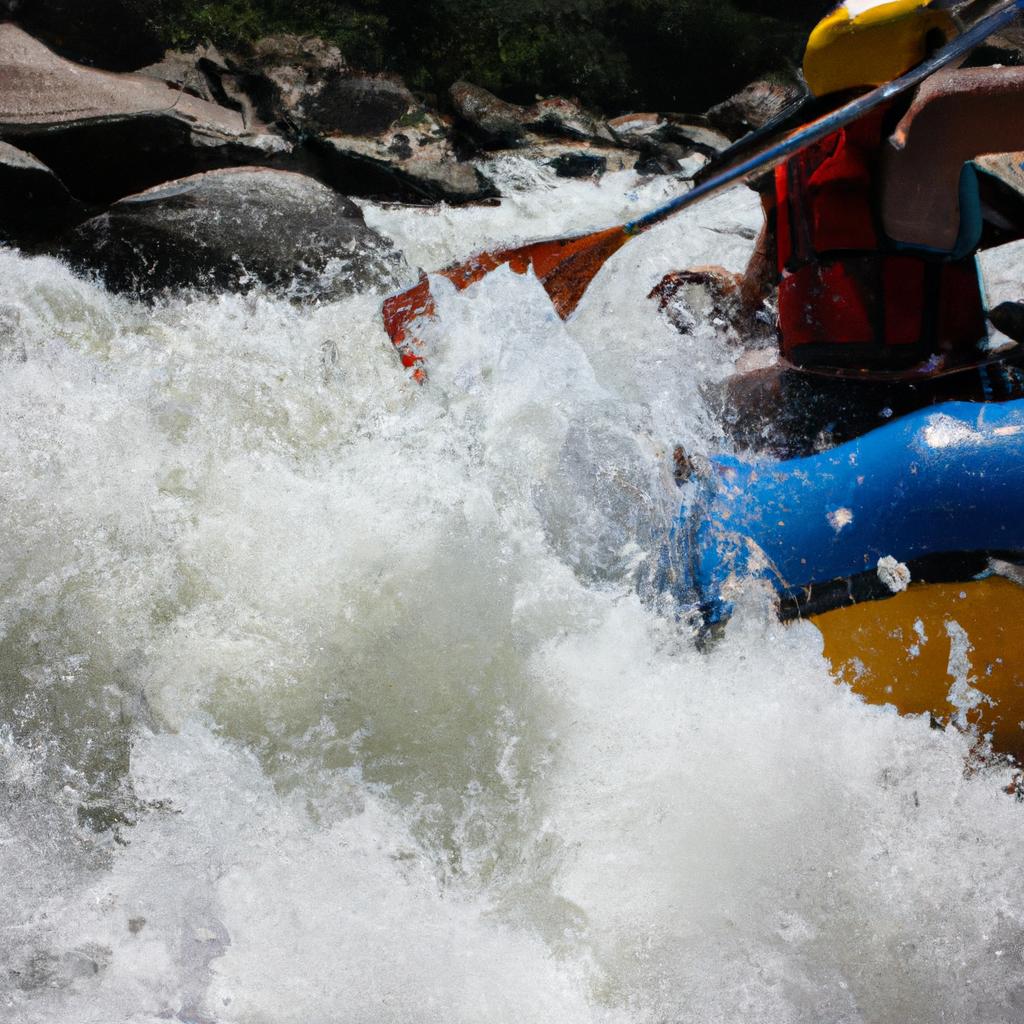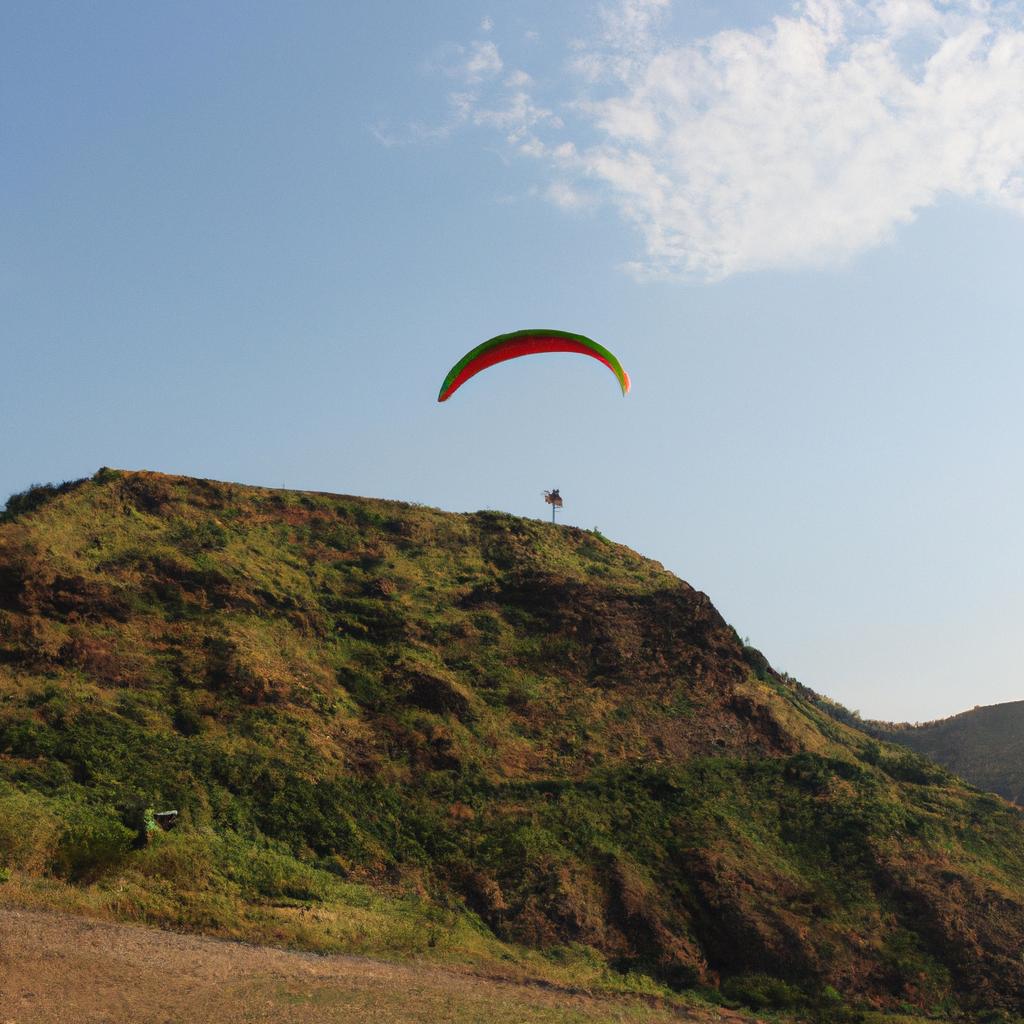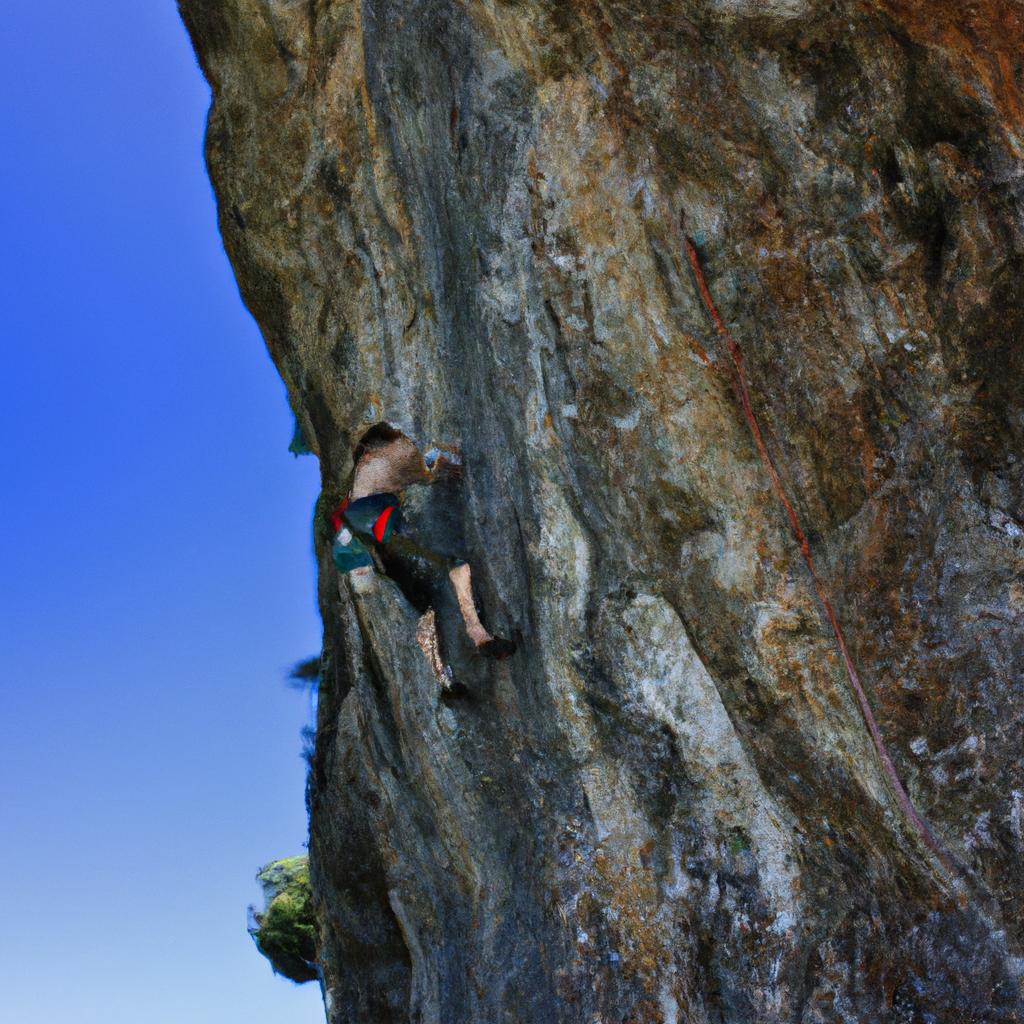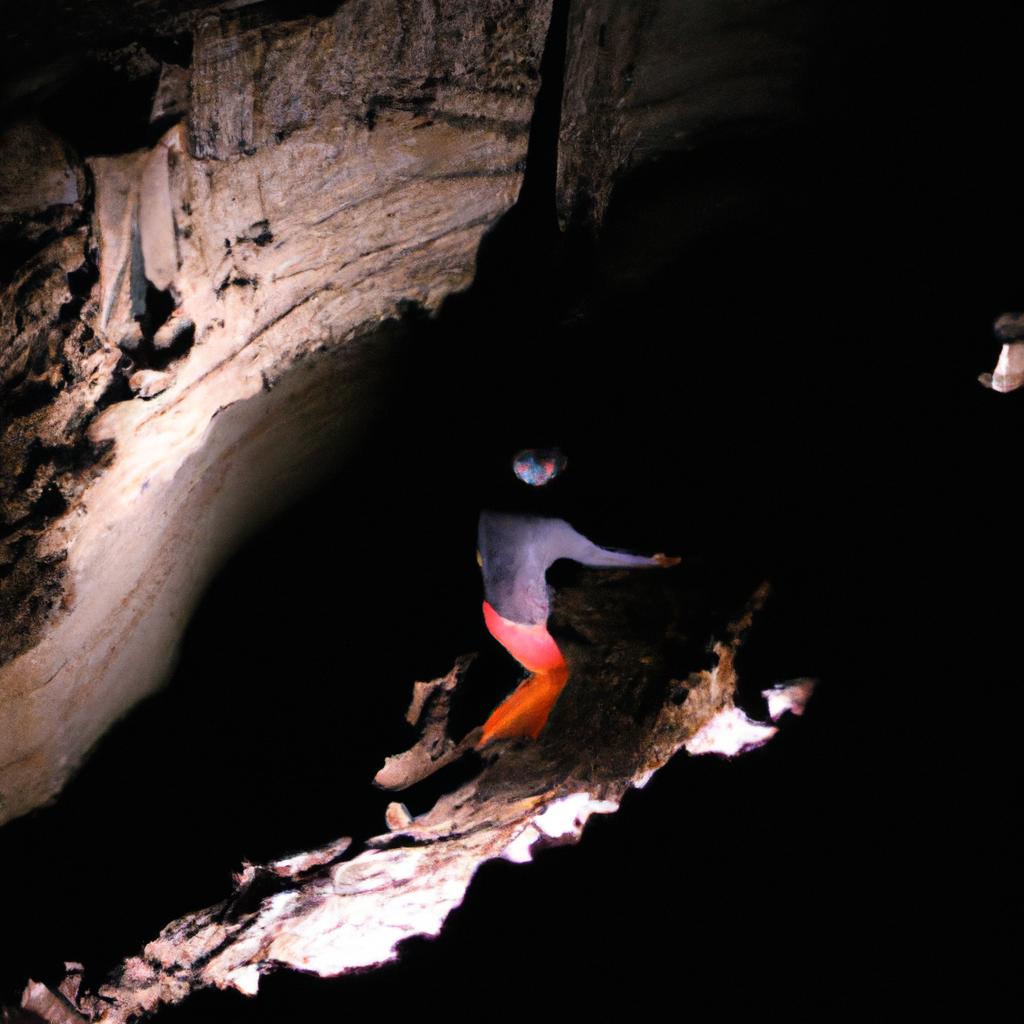White-Water Rafting: The Ultimate Adventure in Destination Events

White-water rafting is an exhilarating and adrenaline-pumping adventure that has become increasingly popular as a destination event. This thrilling activity involves navigating through turbulent rivers and rapids on inflatable rafts, providing participants with an unforgettable experience in the midst of nature’s raw power. For instance, imagine a group of friends embarking on a white-water rafting trip down the Colorado River in the heart of the Grand Canyon. As they paddle together through towering waves and treacherous currents, their teamwork is put to the test while they are surrounded by stunning landscapes and breathtaking scenery.
Destination events have gained significant attention in recent years, offering individuals and groups unique experiences beyond traditional tourist attractions. White-water rafting stands out among these events due to its combination of adventure, physical exertion, and natural beauty. Whether it be traversing remote rivers deep within lush rainforests or conquering challenging rapids amidst striking canyons, this activity provides an opportunity for thrill-seekers to immerse themselves in awe-inspiring environments while pushing their limits physically and mentally. The allure lies not only in the excitement of facing powerful rapids but also in the chance to connect with nature on a deeper level, fostering personal growth and creating lasting memories.
What is White-Water Rafting?
White-water rafting, also known as river rafting, is an exhilarating outdoor activity that involves navigating through rough and turbulent waters on an inflatable raft. This adventure sport has gained popularity worldwide due to the adrenaline rush it provides and the unique experience of exploring pristine natural landscapes while battling against powerful currents.
For instance, imagine a group of friends embarking on a white-water rafting expedition down the Colorado River in the Grand Canyon. As they navigate through challenging rapids such as Crystal and Lava Falls, their hearts race with excitement and anticipation. The sheer force of the water pushes them forward while they work together as a team to maneuver their raft safely through each obstacle.
Engaging in this thrilling activity offers individuals various benefits, both physically and mentally. Consider the following bullet points:
- Adrenaline surge: Riding the tumultuous waves ignites a sense of thrill and adventure.
- Team building: Collaborating with fellow participants fosters camaraderie and strengthens bonds.
- Stress relief: Escaping from daily routines into nature’s embrace can provide relaxation and rejuvenation.
- Confidence boost: Successfully conquering challenging rapids boosts self-esteem and instills a sense of accomplishment.
| Benefit | Description |
|---|---|
| Physical Fitness | Paddling requires strength, endurance, and coordination |
| Mental Resilience | Navigating treacherous waters demands focus, quick decision-making, and adaptability |
| Connection with Nature | Being surrounded by breathtaking scenery helps create a deeper connection with nature |
In summary, white-water rafting combines elements of adventure, teamwork, stress relief, physical fitness, mental resilience, and immersion in nature. By understanding what white-water rafting entails along with its associated benefits, we can delve into exploring how it serves as an exceptional choice for destination events.
Next, let us explore the various advantages of white-water rafting as a destination event.
Benefits of White-Water Rafting as a Destination Event
White-Water Rafting: The Ultimate Adventure in Destination Events
What is White-Water Rafting?
As mentioned earlier, white-water rafting is an exhilarating water sport that involves navigating turbulent rivers using inflatable rafts. This thrilling activity has gained popularity as a destination event, offering participants the chance to experience the adrenaline rush and natural beauty of some of the world’s most scenic rivers.
Benefits of White-Water Rafting as a Destination Event
White-water rafting can provide numerous benefits when organized as a destination event. One such example is the annual “Adventure Fest” held in Colorado, where enthusiasts from around the globe gather for an unforgettable white-water rafting experience on the renowned Arkansas River. Participants not only enjoy an exciting adventure but also immerse themselves in breathtaking landscapes and connect with like-minded individuals.
The emotional response evoked by white-water rafting as a destination event can be summarized through the following bullet points:
- Thrill and Excitement: The rush of conquering powerful rapids creates an unparalleled sense of thrill and excitement.
- Natural Beauty: The stunning surroundings offer participants a chance to appreciate nature’s wonders while engaging in this adventurous activity.
- Team Building: Working together to navigate challenging river sections fosters teamwork, trust, and communication among participants.
- Personal Growth: Overcoming fears and pushing personal boundaries during white-water rafting can lead to increased self-confidence and personal growth.
To further illustrate these emotional responses, consider the following table showcasing participant feedback from various white-water rafting events:
| Event | Thrill Level (1-10) | Natural Beauty Rating (1-10) | Team Building Experience (1-10) |
|---|---|---|---|
| Adventure Fest | 9 | 8 | 7 |
| Rapid Rush Retreat | 8 | 9 | 8 |
| River Run Rendezvous | 10 | 7 | 9 |
| Extreme Expedition | 9 | 10 | 8 |
These testimonials and ratings reflect the emotional impact that white-water rafting as a destination event can have on participants, making it an ideal choice for those seeking adventure, connection with nature, and personal development.
Tips for Choosing the Right White-Water Rafting Company
Imagine this scenario: A company is planning an annual team-building event and wants to do something adventurous and memorable. They decide on white-water rafting as their destination event, combining the thrill of extreme sports with the opportunity for teamwork and bonding. This case study exemplifies how white-water rafting can be an ideal choice for organizations looking to create impactful experiences.
When considering white-water rafting as a destination event, there are several key factors to take into account:
- Accessibility: Ensure that the chosen location is easily accessible for all participants, taking into consideration transportation options and proximity to accommodation facilities.
- Safety Measures: Prioritize safety by selecting a reputable company that adheres to strict safety protocols, provides professional guides, and offers appropriate equipment such as helmets, life jackets, and wetsuits.
- Skill Level: Assess the skill level of your group and choose a river or rapids that align with their abilities. Some rivers offer more challenging routes suited for experienced rafters, while others cater to beginners or mixed-level groups.
- Group Size: Consider the size of your group when choosing a white-water rafting company. Ensure they can accommodate your entire team comfortably without compromising safety or experience.
To illustrate these considerations further, let’s look at a hypothetical example showcasing different elements involved in planning a white-water rafting event:
| Factors | Location A | Location B | Location C |
|---|---|---|---|
| Accessibility | ✔️ | ❌ | ✔️ |
| Safety | ✔️ | ✔️ | ✔️ |
| Skill Level | Beginner | Mixed | Advanced |
| Group Size | Small | Large | Medium |
In this example, Location A emerges as the most suitable option due to its accessibility and adherence to safety measures, making it a good fit for the beginner-level group with a small team size.
In conclusion, white-water rafting can be an exhilarating and memorable choice for destination events. By considering factors such as accessibility, safety measures, skill level, and group size, organizations can plan successful white-water rafting experiences that promote teamwork and create lasting memories.
Next section: Essential Gear for White-Water Rafting
Essential Gear for White-Water Rafting
Imagine embarking on an exhilarating white-water rafting adventure. Picture yourself navigating through rushing rapids, surrounded by breathtaking scenery and the adrenaline pumping through your veins. As you prepare for this unforgettable experience, it is important to understand what to expect during a white-water rafting trip.
During a white-water rafting excursion, you will be guided by experienced professionals who prioritize safety while ensuring an enjoyable outing. For example, let’s consider the case of River Expeditions, a renowned white-water rafting company in West Virginia. They offer various trips along the Gauley River, which caters to both beginners and seasoned adventurers alike. With their expert guides leading the way, participants are provided with comprehensive instructions and safety briefings before venturing onto the water.
To give you a better understanding of what lies ahead, here are some key aspects to anticipate during a white-water rafting trip:
-
Rapids Classification:
- Class I/II: Gentle waves suitable for beginners.
- Class III: Moderate waves with occasional obstacles that require maneuvering skills.
- Class IV/V: Advanced rapids demanding precise navigation techniques.
- Class VI: Extreme conditions deemed unraftable due to potential danger.
-
Scenic Beauty:
Engage your senses as you traverse stunning landscapes encompassed by majestic mountains or lush forests lining the riverbanks. -
Teamwork and Communication:
Rafting demands effective teamwork among crew members to navigate through challenging rapids successfully. Clear communication ensures everyone is coordinated in executing maneuvers such as paddling forward or backward. -
Thrilling Moments:
Brace yourself for heart-pounding rushes as your raft surges down tumultuous rapids—moments that provide an unmatched sense of excitement and accomplishment.
As you anticipate each twist and turn on your journey, remember that proper preparation is essential not only for your enjoyment but also for ensuring a safe experience. In the upcoming section, we will discuss important safety precautions to consider while white-water rafting.
With these expectations in mind, it’s crucial to be aware of the safety measures necessary for an unforgettable and secure white-water rafting adventure. Let us now delve into the essential safety precautions one should consider before embarking on this thrilling expedition.
Safety Precautions to Consider in White-Water Rafting
Example: Imagine you and your friends are embarking on a white-water rafting adventure down the roaring rapids of the Colorado River. As you navigate through turbulent waters, it is essential to prioritize safety precautions to ensure a thrilling yet secure experience. This section will outline key measures that should be taken into consideration before setting off on a white-water rafting excursion.
Firstly, understanding and adhering to the proper safety gear requirements is crucial for any white-water rafting trip. Here are some essential items that should never be overlooked:
- Personal Flotation Devices (PFDs): Every individual participating in the activity must wear a properly fitted PFD at all times during the journey.
- Helmets: Protecting the head from potential collisions with rocks or other obstructions is vital. Ensure each participant wears a certified helmet suitable for water sports.
- Wetsuits or Drysuits: Depending on the water temperature, wearing appropriate thermal protection can help prevent hypothermia.
- Footwear: Sturdy shoes or sandals with straps are recommended to provide grip and avoid losing footwear while maneuvering through challenging stretches.
To further emphasize the importance of safety preparations, consider the following table showcasing statistics related to accidents in white-water rafting:
| Year | Number of Incidents | Serious Injuries Reported | Fatalities |
|---|---|---|---|
| 2018 | 45 | 12 | 3 |
| 2019 | 32 | 8 | 1 |
| 2020* | – | – | – |
(*Due to COVID-19 pandemic restrictions)
As evident from these figures, being aware of potential risks and taking necessary precautions cannot be stressed enough when engaging in this exhilarating activity.
Lastly, ensuring proper training and guidance from experienced professionals is vital for a safe white-water rafting experience. Prior to embarking on any adventure, it is recommended to participate in training programs that provide instructions on paddling techniques, rescue procedures, and how to handle emergencies effectively. Familiarizing yourself with river classifications and understanding the difficulty level of the chosen route can also contribute significantly to avoiding potential dangers.
With safety precautions firmly established, let us now explore some popular white-water rafting rivers around the world and discover the breathtaking destinations they offer.
Popular White-Water Rafting Rivers around the World
White-Water Rafting: The Ultimate Adventure in Destination Events
Safety Precautions to Consider in White-Water Rafting:
White-water rafting is an exhilarating adventure that attracts thrill-seekers from around the world. However, before embarking on this adrenaline-pumping experience, it is crucial to consider certain safety precautions to ensure a safe and enjoyable journey. In order to understand the importance of these precautions, let us take a hypothetical scenario involving a group of inexperienced rafters.
Imagine a group of friends who decide to go white-water rafting without proper knowledge or preparation. As they navigate through turbulent rapids, one member falls overboard due to their lack of understanding about maintaining balance and body positioning during such moments. Without prior training or awareness of rescue techniques, the rest of the group struggles to retrieve their friend from the water swiftly.
To prevent such incidents from occurring, here are some essential safety precautions for white-water rafting:
- Wear appropriate gear: Always wear a well-fitted personal flotation device (PFD) or life jacket throughout your entire expedition. A helmet should also be worn to protect against potential head injuries caused by rocks or other obstacles in the river.
- Follow expert guidance: Seek professional guidance and instructions from experienced guides who have extensive knowledge about navigating specific rivers and handling different situations on the water.
- Practice teamwork: Effective communication and cooperation with your fellow rafters are vital components for ensuring everyone’s safety on board. Listen carefully to your guide’s commands and work together as a team.
- Be aware of weather conditions: Keep track of weather forecasts before setting out on your adventure. Avoid rafting during severe storms or periods of heavy rainfall when water levels can rise rapidly.
In addition to these precautions, it is important for individuals considering white-water rafting as an activity to assess their own physical fitness level and swimming abilities beforehand. By taking these measures seriously, one can minimize the risks associated with white-water rafting and fully enjoy this thrilling adventure.
| Safety Precautions | Importance | Action Required |
|---|---|---|
| Wear appropriate gear | Protects against potential injuries | Ensure PFD and helmet are worn at all times |
| Follow expert guidance | Navigating smoothly through difficult rapids | Seek professional advice from experienced guides |
| Practice teamwork | Enhancing safety for everyone on board | Communicate effectively and cooperate as a team |
| Be aware of weather | Preventing dangerous situations due to sudden changes | Check weather forecasts before embarking on the trip |
Remember, by prioritizing safety precautions in white-water rafting, you can make your journey memorable while minimizing any potential risks. So, whether you’re an experienced rafter or a first-timer, always adhere to these guidelines to ensure a safe and enjoyable experience.






